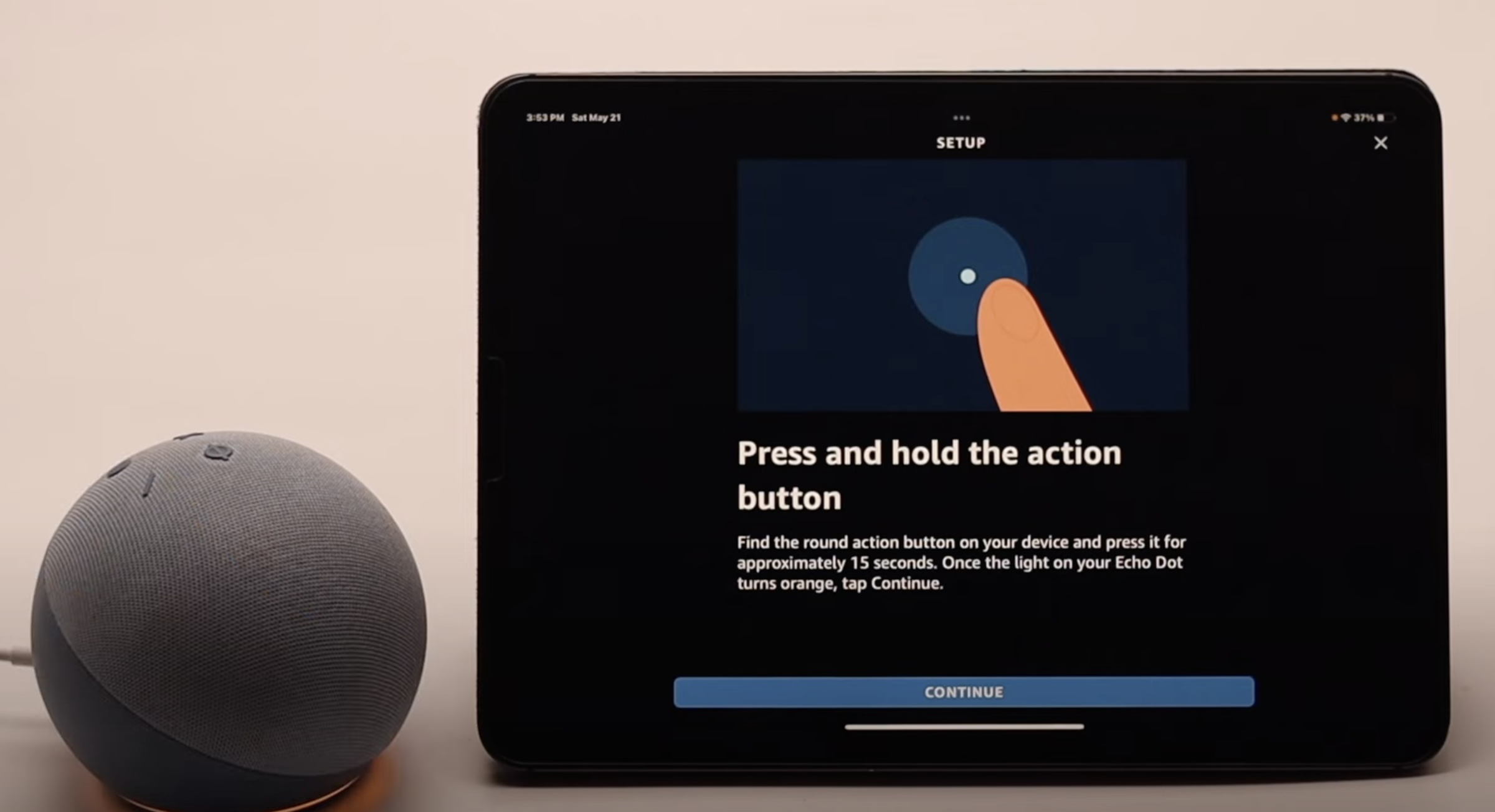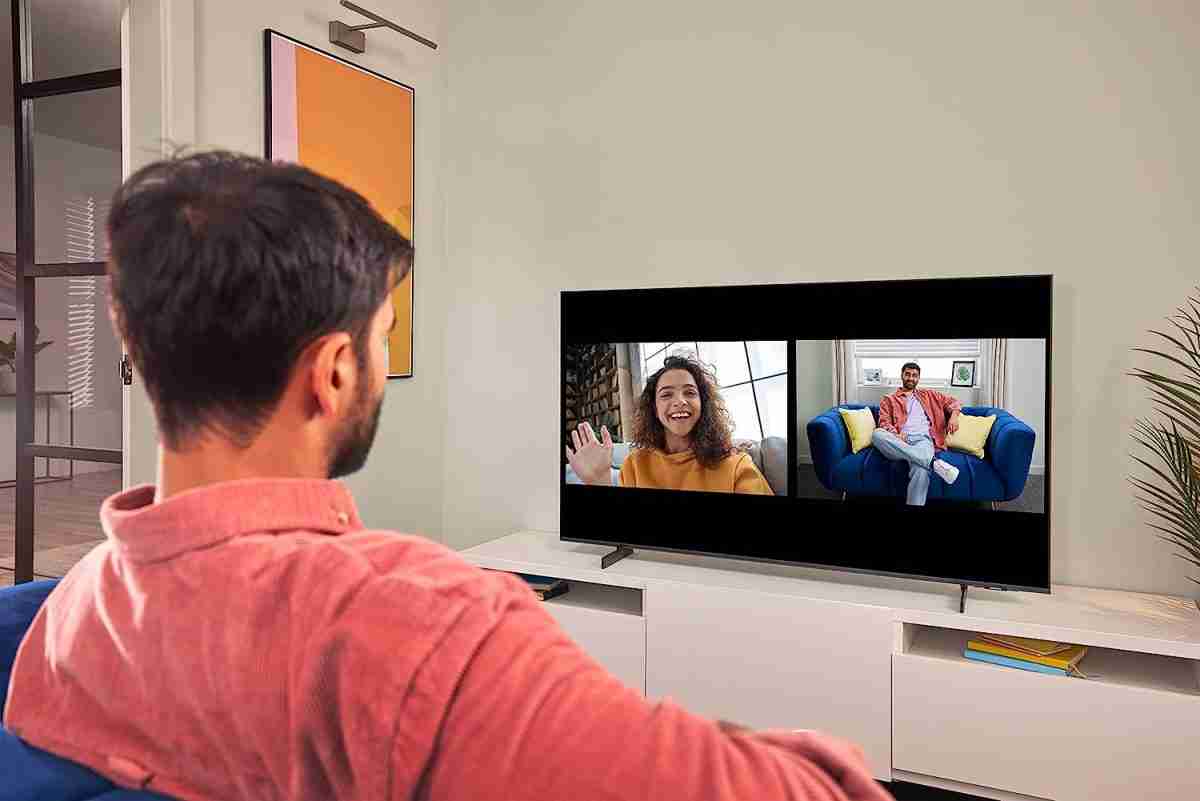Home>Technology>Home Entertainment Systems>Why Might A Marketer Choose Internet Advertising Over Television Advertising


Home Entertainment Systems
Why Might A Marketer Choose Internet Advertising Over Television Advertising
Published: December 21, 2023
Discover the advantages of internet advertising over television for home entertainment systems. Learn why marketers are choosing digital platforms for better reach and engagement.
(Many of the links in this article redirect to a specific reviewed product. Your purchase of these products through affiliate links helps to generate commission for Storables.com, at no extra cost. Learn more)
Introduction
In the rapidly evolving landscape of advertising, the choice between internet advertising and television advertising has become a pivotal decision for marketers. With the digital realm expanding at an unprecedented rate, the efficacy of internet advertising has come under the spotlight, challenging the traditional dominance of television advertising. This article delves into the compelling reasons why a marketer might opt for internet advertising over television advertising. From cost-effectiveness and precise targeting to measurability and engagement, the advantages of internet advertising are reshaping the marketing sphere, offering unparalleled opportunities for brands to connect with their audiences. Let's explore these factors in detail to unravel the strategic allure of internet advertising in today's dynamic marketing environment.
Key Takeaways:
- Internet advertising offers cost-effective targeting, expansive reach, and robust measurability, empowering marketers to engage specific audiences and optimize budgets for maximum impact.
- With interactive experiences and dynamic engagement, internet advertising fosters meaningful connections, driving higher brand interaction and consumer participation in a digital-centric world.
Read more: How To Watch Television Over The Internet
Cost
One of the primary considerations that prompt marketers to favor internet advertising over television advertising is the cost-effectiveness of the former. Internet advertising, particularly through social media and search engine platforms, enables marketers to allocate their budgets more efficiently. Unlike the exorbitant costs associated with television advertising, internet advertising offers a range of budget-friendly options, including pay-per-click (PPC), cost-per-impression (CPM), and cost-per-acquisition (CPA) models. This flexibility allows marketers to optimize their spending and achieve a higher return on investment (ROI).
Furthermore, the ability to target specific demographics and audiences with precision ensures that the advertising budget is utilized effectively, reaching those most likely to engage with the brand. This targeted approach minimizes wastage and maximizes the impact of the advertising expenditure. In contrast, television advertising, with its broad audience reach, often entails higher costs and a less refined targeting mechanism, leading to a lower cost-efficiency compared to internet advertising.
Moreover, the advent of programmatic advertising has revolutionized the cost structure of internet advertising, enabling real-time bidding and automated ad placements. This not only streamlines the advertising process but also optimizes costs by targeting the most relevant audiences at the right time and in the right context. The cost advantages of internet advertising, coupled with its precise targeting capabilities, make it an increasingly attractive option for marketers seeking to maximize the impact of their advertising budgets.
Targeting
Internet advertising offers unparalleled targeting capabilities, allowing marketers to pinpoint specific demographics, interests, behaviors, and geographic locations with remarkable precision. This level of granularity empowers marketers to tailor their advertising messages to resonate with the intended audience, resulting in higher engagement and conversion rates. Through advanced data analytics and audience segmentation, internet advertising platforms enable marketers to create highly personalized campaigns that resonate with the unique preferences and characteristics of their target audience.
Unlike the broad and less-targeted approach of television advertising, which often reaches a diverse audience with varying levels of interest in the advertised products or services, internet advertising enables precise targeting based on factors such as age, gender, income level, online behavior, and purchase intent. This granular targeting not only enhances the relevance of the advertisements but also minimizes ad fatigue and ad blindness, as consumers are more likely to engage with content that aligns with their specific interests and needs.
Furthermore, the ability to leverage first-party and third-party data for targeting amplifies the effectiveness of internet advertising. Marketers can harness user data, such as browsing history, search queries, and social media interactions, to tailor their ad placements with a level of personalization that is unparalleled in traditional television advertising. Additionally, the availability of lookalike audience targeting enables marketers to expand their reach by identifying and targeting audiences that share similar characteristics and behaviors with their existing customer base, thereby maximizing the potential for acquiring new customers.
Overall, the precise targeting capabilities of internet advertising empower marketers to deliver tailored messages to the right audience segments, fostering deeper connections and driving meaningful engagement with their brands.
Reach
When comparing the reach of internet advertising to that of television advertising, it becomes evident that the digital realm offers unparalleled opportunities for extending the reach of marketing campaigns. Internet advertising transcends geographical boundaries and time constraints, enabling brands to connect with global audiences around the clock. The pervasive nature of online platforms, including social media, websites, and mobile apps, ensures that marketing messages can reach diverse audiences across various devices, from smartphones and tablets to desktop computers.
Moreover, the exponential growth of internet users worldwide has propelled the reach of internet advertising to unprecedented levels. With billions of people actively engaging with online content and digital platforms, marketers can tap into vast and diverse audiences, spanning different demographics, interests, and cultural backgrounds. This breadth of reach empowers brands to amplify their visibility and impact, fostering brand awareness and recognition on a global scale.
Additionally, the interactive nature of internet advertising enhances its reach by facilitating two-way communication between brands and consumers. Through social media engagement, influencer collaborations, and interactive ad formats, internet advertising cultivates a dynamic and participatory relationship with audiences, thereby extending the reach of marketing initiatives beyond mere exposure to fostering meaningful interactions and conversations.
Furthermore, the accessibility of internet advertising across multiple touchpoints, including social networking sites, search engines, video platforms, and display networks, ensures that brands can engage with audiences at various stages of the consumer journey. Whether it’s raising awareness, driving consideration, or prompting action, the multifaceted reach of internet advertising enables brands to connect with consumers at pivotal moments, ultimately influencing their purchasing decisions and brand perceptions.
In contrast, while television advertising continues to wield influence, its reach is constrained by factors such as regional broadcasting, time slots, and viewer demographics. Internet advertising, with its expansive and dynamic reach, transcends these limitations, offering marketers unparalleled opportunities to connect with audiences on a global scale, across diverse platforms, and in interactive formats that enrich the overall consumer experience.
Internet advertising allows for more targeted and cost-effective campaigns compared to television advertising. Marketers can reach specific demographics and track performance in real-time, making it a valuable choice for reaching a specific audience.
Measurability
One of the distinct advantages of internet advertising over television advertising lies in its robust measurability. Internet advertising platforms provide comprehensive and real-time analytics that empower marketers to track, measure, and analyze the performance of their campaigns with unparalleled granularity. From website traffic and click-through rates to conversion metrics and audience engagement, the measurability of internet advertising equips marketers with actionable insights to optimize their strategies and maximize their ROI.
Through advanced web analytics tools and ad platform integrations, marketers can gain deep visibility into the performance of their online campaigns, identifying key performance indicators (KPIs) and assessing the impact of their advertising efforts in real time. This level of transparency and data-driven decision-making enables marketers to refine their targeting, messaging, and creative elements based on empirical evidence, thereby enhancing the effectiveness of their campaigns.
Furthermore, the attribution modeling capabilities of internet advertising platforms enable marketers to attribute conversions and customer actions to specific touchpoints along the consumer journey. This attribution clarity empowers marketers to understand the influence of various advertising channels and optimize their budget allocation accordingly, ensuring that resources are allocated to the most impactful channels and tactics.
Moreover, the ability to conduct A/B testing, multivariate testing, and ad creative optimization in the digital realm enhances the measurability of internet advertising. Marketers can experiment with different ad formats, messaging variations, and audience segments, leveraging data-driven insights to identify the most compelling and resonant approaches. This iterative testing and optimization process fosters continuous improvement, allowing marketers to adapt their strategies based on real-time performance data and consumer feedback.
Compared to television advertising, which traditionally relies on ratings, surveys, and estimations for measuring audience reach and impact, internet advertising offers a level of measurability that is unparalleled. The ability to quantify and analyze the effectiveness of online campaigns in granular detail empowers marketers to make informed decisions, iterate on their strategies, and drive tangible results with precision and agility.
Read more: Why Is Television Advertising Effective
Flexibility
Flexibility is a defining attribute that sets internet advertising apart from traditional television advertising, offering marketers dynamic control over their campaigns and the agility to adapt to evolving market dynamics. Internet advertising provides a spectrum of flexible options, allowing marketers to customize their ad placements, adjust their budgets in real time, and pivot their strategies based on performance insights and market trends.
One of the key facets of flexibility in internet advertising is the ability to optimize campaigns on the fly. Marketers can leverage real-time data and analytics to make swift adjustments to their ad creatives, targeting parameters, and bidding strategies, ensuring that their campaigns remain aligned with their objectives and responsive to consumer behavior. This nimbleness empowers marketers to seize opportunities, mitigate challenges, and capitalize on emerging trends without being constrained by fixed, long-term ad placements.
Additionally, the diverse array of ad formats and placements available in internet advertising affords marketers the flexibility to experiment with different approaches and tailor their strategies to specific platforms and audience preferences. Whether it’s video ads on social media, display ads on websites, or sponsored content on digital publications, the flexibility of internet advertising allows marketers to engage audiences in varied contexts and formats, optimizing their messaging for different touchpoints along the consumer journey.
Furthermore, the scalability of internet advertising grants marketers the flexibility to adjust their budgets and scale their campaigns in line with their evolving objectives and market conditions. Whether it’s ramping up advertising efforts during peak seasons or reallocating resources to capitalize on emerging opportunities, internet advertising provides the agility to adapt to changing business needs and consumer dynamics in a manner that traditional television advertising often struggles to match.
Compared to the fixed nature of television ad placements, which are typically booked well in advance and offer limited room for real-time adjustments, internet advertising’s flexibility enables marketers to navigate the dynamic digital landscape with agility, responsiveness, and a proactive approach to optimizing their campaigns for maximum impact.
Engagement
Internet advertising excels in fostering meaningful engagement with audiences, offering interactive and immersive experiences that transcend the passive nature of traditional television advertising. Through social media platforms, interactive ad formats, and compelling multimedia content, internet advertising cultivates a dynamic and participatory relationship with consumers, driving higher levels of engagement and brand interaction.
Social media advertising, in particular, serves as a powerful catalyst for engagement, enabling brands to initiate conversations, solicit feedback, and build communities around their products or services. The interactive nature of social media platforms allows consumers to like, share, comment, and interact with brand content, fostering a sense of connectivity and dialogue that extends beyond the confines of traditional advertising channels.
Moreover, the multimedia capabilities of internet advertising, including video ads, rich media banners, and interactive microsites, facilitate immersive storytelling and experiential engagement. Marketers can leverage compelling visuals, interactive elements, and personalized messaging to captivate audiences and elicit emotional responses, thereby forging deeper connections and resonating with consumers on a profound level.
Furthermore, the ability to leverage user-generated content, influencer collaborations, and user participation initiatives amplifies the engagement potential of internet advertising. By involving consumers in brand storytelling, co-creation endeavors, and interactive campaigns, marketers can foster a sense of ownership and co-authorship among their audiences, leading to heightened brand affinity and advocacy.
Additionally, the feedback loop inherent in internet advertising enables marketers to glean insights from consumer interactions, sentiment analysis, and engagement metrics, informing their strategies and content optimization efforts. This iterative process of listening, responding, and adapting based on consumer feedback fosters a continuous cycle of engagement that strengthens brand-consumer relationships and drives long-term loyalty.
Overall, the interactive and participatory nature of internet advertising transcends the passive viewership of television advertising, offering brands the opportunity to create immersive experiences, spark conversations, and build enduring connections with their audiences through dynamic engagement strategies.
Conclusion
As the marketing landscape continues to evolve, the decision to choose internet advertising over television advertising emerges as a strategic imperative for brands seeking to maximize their impact and connect with audiences in a dynamic digital environment. The compelling advantages of internet advertising, spanning cost-effectiveness, precise targeting, expansive reach, robust measurability, flexibility, and engagement, underscore its pivotal role in reshaping the marketing paradigm.
By harnessing the cost-effectiveness of internet advertising, marketers can optimize their budgets and achieve a higher return on investment, leveraging precise targeting capabilities to engage with specific audience segments and minimize wastage. The expansive reach of internet advertising transcends geographical boundaries and time constraints, enabling brands to connect with diverse audiences on a global scale, across various digital touchpoints.
Furthermore, the robust measurability of internet advertising empowers marketers to track, analyze, and optimize their campaigns with unparalleled granularity, leveraging real-time insights to drive data-driven decision-making and continuous improvement. The flexibility inherent in internet advertising allows marketers to adapt their strategies, experiment with different ad formats, and optimize their campaigns in real time, fostering agility and responsiveness in a dynamic market landscape.
Ultimately, the engagement potential of internet advertising, with its interactive and immersive experiences, fosters meaningful connections with audiences, driving higher levels of brand interaction and consumer participation. By embracing the strategic allure of internet advertising, brands can position themselves at the forefront of digital marketing innovation, leveraging the transformative capabilities of online platforms to engage, resonate, and build enduring relationships with their target audiences.
In conclusion, the shift towards internet advertising represents a paradigmatic evolution in the marketing domain, offering brands unprecedented opportunities to amplify their visibility, engage with diverse audiences, and drive tangible results in an increasingly digital-centric world.
Frequently Asked Questions about Why Might A Marketer Choose Internet Advertising Over Television Advertising
Was this page helpful?
At Storables.com, we guarantee accurate and reliable information. Our content, validated by Expert Board Contributors, is crafted following stringent Editorial Policies. We're committed to providing you with well-researched, expert-backed insights for all your informational needs.















0 thoughts on “Why Might A Marketer Choose Internet Advertising Over Television Advertising”